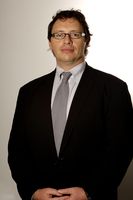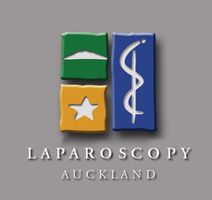Central Auckland, East Auckland, North Auckland, South Auckland, West Auckland > Private Hospitals & Specialists >
Laparoscopy Auckland
Private Service, General Surgery
Description
Laparoscopy Auckland is a purpose-built environment. All rooms are single with an emphasis on NZ/Pacific Designer fit out and art. The theme is safety, efficiency and service.
Consultants
-

Associate Professor Adam Bartlett
Hepatopancreaticobiliary and Laparoscopic Surgeon
-
Mr Peter Carr-Boyd
Hepatopancreaticobiliary and Laparoscopic Surgeon
-

Mr Michael JJ Chu
General, Gallbladder, Hernia, HPB and Laparoscopic Surgeon
-

Mr John Dunn
General and Laparoscopic Surgeon
-

Miss Alison Hayes
Breast and General Surgery
-

Mr David Merrilees
Urologist
-

Mr Jon Morrow
General and Laparoscopic Surgeon
-

Mr Jason Robertson
General and Laparoscopic Surgeon
Referral Expectations
Fees and Charges Description
Laparoscopy Auckland is a Southern Cross Affiliated Provider for procedures within the General surgery (gall bladder, hernia) service area. These include :
- Laparoscopic cholecystectomy
- Laparoscopic cholecystectomy with an intraoperative cholangiogram
- Laparoscopic nissen fundoplication
- Laparoscopic repair of femoral hernia
- Laparoscopic repair of inguinal hernia
- Open repair of epigastric hernia
- Open repair of incisional hernia
- Open repair of umbilical hernia
Procedures / Treatments
Gallstones, small stone-like structures, form in the fluid (bile) that is stored in the gallbladder. They may vary from the size of a grain of sand to a golf ball and there may be one or hundreds present. Gallstones can cause severe abdominal pain if they block the outlet of the gallbladder. Laparoscopic Cholecystectomy is surgical removal of the gallbladder. A laparoscope is inserted into the abdominal cavity at the level of the umbilicus (belly button). Surgical instruments are inserted through other incisions and the gallbladder removed. For more information on the above topic, please refer to Andrew Bowker's website: www.gallstones.co.nz
Gallstones, small stone-like structures, form in the fluid (bile) that is stored in the gallbladder. They may vary from the size of a grain of sand to a golf ball and there may be one or hundreds present. Gallstones can cause severe abdominal pain if they block the outlet of the gallbladder. Laparoscopic Cholecystectomy is surgical removal of the gallbladder. A laparoscope is inserted into the abdominal cavity at the level of the umbilicus (belly button). Surgical instruments are inserted through other incisions and the gallbladder removed. For more information on the above topic, please refer to Andrew Bowker's website: www.gallstones.co.nz
Gallstones, small stone-like structures, form in the fluid (bile) that is stored in the gallbladder. They may vary from the size of a grain of sand to a golf ball and there may be one or hundreds present.
Gallstones can cause severe abdominal pain if they block the outlet of the gallbladder.
Laparoscopic Cholecystectomy is surgical removal of the gallbladder. A laparoscope is inserted into the abdominal cavity at the level of the umbilicus (belly button). Surgical instruments are inserted through other incisions and the gallbladder removed.
For more information on the above topic, please refer to Andrew Bowker's website: www.gallstones.co.nz
A hernia exists where part of the abdominal wall is weakened and the contents of the abdomen push through to the outside, forming a swelling or bulge. Common sites are in the groin (inguinal hernia), at the umbilicus or belly button (umbilical or para-umbilical hernia), the upper abdominal midline above the umbilicus (epigastric hernia), and through previous surgical scars (incisional hernias). Laparoscopic Hernia Repair is most commonly used for inguinal hernias. It involves using surgical instruments to mobilise the hernia back into its original position. Surgical mesh covers the defect in the abdominal wall. For more information on the above topic, please refer to Andrew Bowker's website: www.hernia.co.nz
A hernia exists where part of the abdominal wall is weakened and the contents of the abdomen push through to the outside, forming a swelling or bulge. Common sites are in the groin (inguinal hernia), at the umbilicus or belly button (umbilical or para-umbilical hernia), the upper abdominal midline above the umbilicus (epigastric hernia), and through previous surgical scars (incisional hernias). Laparoscopic Hernia Repair is most commonly used for inguinal hernias. It involves using surgical instruments to mobilise the hernia back into its original position. Surgical mesh covers the defect in the abdominal wall. For more information on the above topic, please refer to Andrew Bowker's website: www.hernia.co.nz
A hernia exists where part of the abdominal wall is weakened and the contents of the abdomen push through to the outside, forming a swelling or bulge. Common sites are in the groin (inguinal hernia), at the umbilicus or belly button (umbilical or para-umbilical hernia), the upper abdominal midline above the umbilicus (epigastric hernia), and through previous surgical scars (incisional hernias).
Laparoscopic Hernia Repair is most commonly used for inguinal hernias. It involves using surgical instruments to mobilise the hernia back into its original position. Surgical mesh covers the defect in the abdominal wall.
For more information on the above topic, please refer to Andrew Bowker's website: www.hernia.co.nz
GORD is caused by the backflow (reflux) of food and acid from the stomach into the oesophagus (the tube that connects the mouth to the stomach). This happens when the valve between the lower end of the oesophagus and the stomach is not working properly. The main symptom of GORD is heartburn (a burning feeling in the upper abdomen and chest). Regurgitation of food is also common. A hiatus hernia is often present, and is one of the causative factors behind reflux. Laparoscopic Fundoplication for GORD involves wrapping the top part of the stomach (fundus) around the lower end of the oesophagus. This creates a valve mechanism between the stomach and the oesophagus, thereby preventing further reflux of acid and food. For more information on the above topic, please refer to Andrew Bowker's website: http://www.laparoscopicsurgeon.co.nz/
GORD is caused by the backflow (reflux) of food and acid from the stomach into the oesophagus (the tube that connects the mouth to the stomach). This happens when the valve between the lower end of the oesophagus and the stomach is not working properly. The main symptom of GORD is heartburn (a burning feeling in the upper abdomen and chest). Regurgitation of food is also common. A hiatus hernia is often present, and is one of the causative factors behind reflux. Laparoscopic Fundoplication for GORD involves wrapping the top part of the stomach (fundus) around the lower end of the oesophagus. This creates a valve mechanism between the stomach and the oesophagus, thereby preventing further reflux of acid and food. For more information on the above topic, please refer to Andrew Bowker's website: http://www.laparoscopicsurgeon.co.nz/
GORD is caused by the backflow (reflux) of food and acid from the stomach into the oesophagus (the tube that connects the mouth to the stomach). This happens when the valve between the lower end of the oesophagus and the stomach is not working properly. The main symptom of GORD is heartburn (a burning feeling in the upper abdomen and chest). Regurgitation of food is also common. A hiatus hernia is often present, and is one of the causative factors behind reflux.
Laparoscopic Fundoplication for GORD involves wrapping the top part of the stomach (fundus) around the lower end of the oesophagus. This creates a valve mechanism between the stomach and the oesophagus, thereby preventing further reflux of acid and food.
For more information on the above topic, please refer to Andrew Bowker's website: http://www.laparoscopicsurgeon.co.nz/
The appendix is a small worm-like tube attached to the intestine in the lower right abdomen. If it becomes blocked or infected it can cause appendicitis, resulting in pain on the right side of the abdomen, nausea and vomiting. Laparoscopic Appendicectomy is removal of the appendix using surgical instruments inserted through incisions in the lower abdomen.
The appendix is a small worm-like tube attached to the intestine in the lower right abdomen. If it becomes blocked or infected it can cause appendicitis, resulting in pain on the right side of the abdomen, nausea and vomiting. Laparoscopic Appendicectomy is removal of the appendix using surgical instruments inserted through incisions in the lower abdomen.
The appendix is a small worm-like tube attached to the intestine in the lower right abdomen. If it becomes blocked or infected it can cause appendicitis, resulting in pain on the right side of the abdomen, nausea and vomiting.
Laparoscopic Appendicectomy is removal of the appendix using surgical instruments inserted through incisions in the lower abdomen.
The spleen is a soft fleshy organ in the upper left abdomen that is involved in the formation and cleansing of blood. It may need to be removed if it becomes enlarged, has a tumour or cyst, or in the presence of certain blood disorders, the most common of which results in abnormal destruction of platelets (ITP). This causes abnormal bruising and bleeding. Laparoscopic Splenectomy involves freeing the spleen from its attachments and removing it through a small abdominal incision, usually within a surgical plastic retrieval bag. For more information on the above topic, please refer to Andrew Bowker's website: www.spleen.co.nz
The spleen is a soft fleshy organ in the upper left abdomen that is involved in the formation and cleansing of blood. It may need to be removed if it becomes enlarged, has a tumour or cyst, or in the presence of certain blood disorders, the most common of which results in abnormal destruction of platelets (ITP). This causes abnormal bruising and bleeding. Laparoscopic Splenectomy involves freeing the spleen from its attachments and removing it through a small abdominal incision, usually within a surgical plastic retrieval bag. For more information on the above topic, please refer to Andrew Bowker's website: www.spleen.co.nz
The spleen is a soft fleshy organ in the upper left abdomen that is involved in the formation and cleansing of blood. It may need to be removed if it becomes enlarged, has a tumour or cyst, or in the presence of certain blood disorders, the most common of which results in abnormal destruction of platelets (ITP). This causes abnormal bruising and bleeding.
Laparoscopic Splenectomy involves freeing the spleen from its attachments and removing it through a small abdominal incision, usually within a surgical plastic retrieval bag.
Document Downloads
- Laparoscopic Cholecystectomy (PDF, 87.1 KB)
- Laparoscopic Hernia Repair (PDF, 82.7 KB)
- Laparoscopic Anti-Reflux Surgery (PDF, 79.9 KB)
Visiting Hours
Visiting is permitted until 9pm. After 5pm, access to the hospital is down the driveway on the right hand side of our building, via the ramp. After 9pm, there is a doorbell on the ramp at the entrance to Laparoscopy Auckland to alert staff of your presence.
Refreshments
Refreshments will be provided to patients in the hospital that are appropriate for the surgical procedure performed.
Public Transport
The Auckland Transport Journey Planner will help you to plan your journey.
Parking
Parking is available for patients and visitors in the front carpark.
Accommodation
Accommodation in the hospital is all single rooms with a shared ensuite.
TV is provided in all patient rooms, including 3 SKY channels.
Internet access is available in all patient rooms (wireless) on request.

Contact Details
148 Gillies Avenue, Epsom, Auckland
Central Auckland
-
Phone
(09) 623 8525
Mr John Dunn: Ph (09) 623 0555; Fax (09) 623 6662 johndunn@laparoscopyauckland.co.nz
Associates
Mr Adam Bartlett: Ph (09) 623 4789
Miss Alison Hayes: Ph (09) 623 4788
Mr David Merrilees: Ph (09) 623 4783; Fax (09) 623 8526 merrilees@laparoscopyauckland.co.nz
Mr Jon Morrow: Ph (09) 925 4047 admin@discoverweightloss.co.nz
Mr Peter Carr-Boyd Ph 027 333 6696 drpcb@ugicare.co.nz
Mr Jason Robertson Ph (09) 869 3080 hello@jrsurgery.co.nz
Street Address
148 Gillies Ave
Epsom
Auckland
Postal Address
148 Gillies Ave
Epsom
Auckland 1023
Was this page helpful?
This page was last updated at 3:13PM on September 13, 2024. This information is reviewed and edited by Laparoscopy Auckland.

